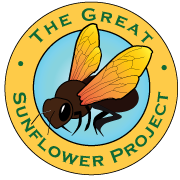
Several groups have put together information pesticides and ways to protect bees from pesticides.
Here are ten tips put together by Washington state.
The USDA has also announced new pesticide labeling that will prohibit neonicotinoid use where bees are present. The press release is copied below.
2013 News Releases
New Pesticide Labels Will Better Protect Bees and Other Pollinators
Release Date: 08/15/2013
Contact Information: Molly Hooven (news media only) Hooven.molly@epa.gov 202-564-2313 202-564-4355 Dale Kemery (news media only) Kemery.dale@epa.gov 202-564-7839 202-564-4355 En español: Lina Younes younes.lina@epa.gov 202-564-9924 202-564-4355
WASHINGTON – In an ongoing effort to protect bees and other pollinators, the U.S. Environmental Protection Agency (EPA) has developed new pesticide labels that prohibit use of some neonicotinoid pesticide products where bees are present.
“Multiple factors play a role in bee colony declines, including pesticides. The Environmental Protection Agency is taking action to protect bees from pesticide exposure and these label changes will further our efforts,” said Jim Jones, assistant administrator for the Office of Chemical Safety and Pollution Prevention.
The new labels will have a bee advisory box and icon with information on routes of exposure and spray drift precautions. Today’s announcement affects products containing the neonicotinoids imidacloprid, dinotefuran, clothianidin and thiamethoxam. The EPA will work with pesticide manufacturers to change labels so that they will meet the Federal Insecticide, Fungicide, and Rodenticide Act (FIFRA) safety standard.
In May, the U.S. Department of Agriculture (USDA) and EPA released a comprehensive scientific report on honey bee health, showing scientific consensus that there are a complex set of stressors associated with honey bee declines, including loss of habitat, parasites and disease, genetics, poor nutrition and pesticide exposure.
The agency continues to work with beekeepers, growers, pesticide applicators, pesticide and seed companies, and federal and state agencies to reduce pesticide drift dust and advance best management practices. The EPA recently released new enforcement guidance to federal, state and tribal enforcement officials to enhance investigations of beekill incidents.
More on the EPA’s label changes and pollinator protection efforts: http://www.epa.gov/opp00001/ecosystem/pollinator/index.html
View the infographic on EPA’s new bee advisory box: http://www.epa.gov/pesticides/ecosystem/pollinator/bee-label-info-graphi...
